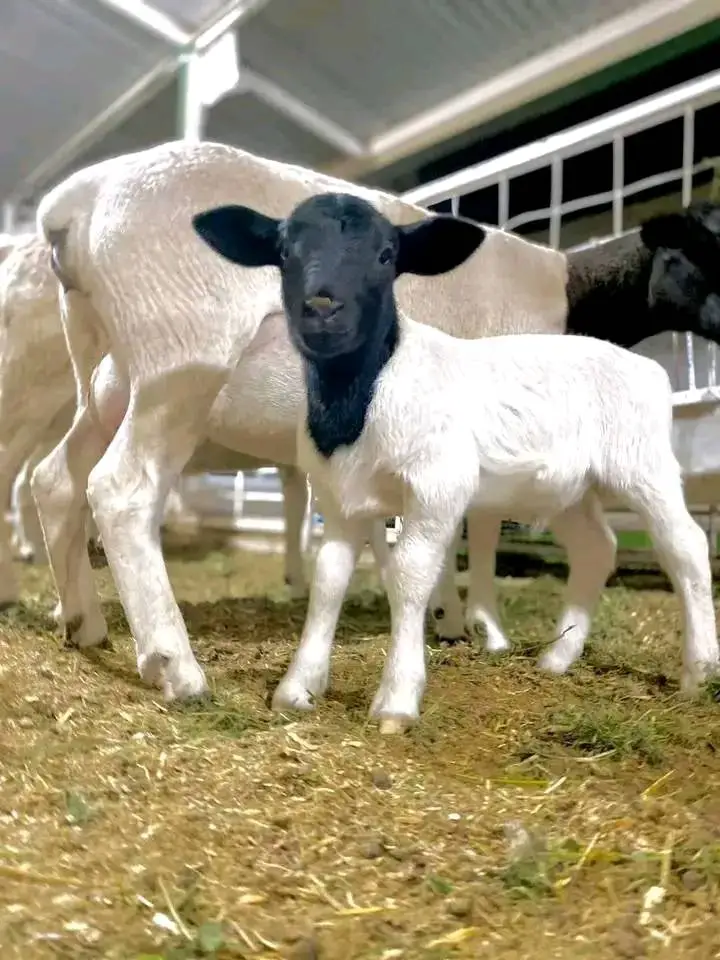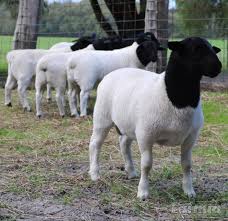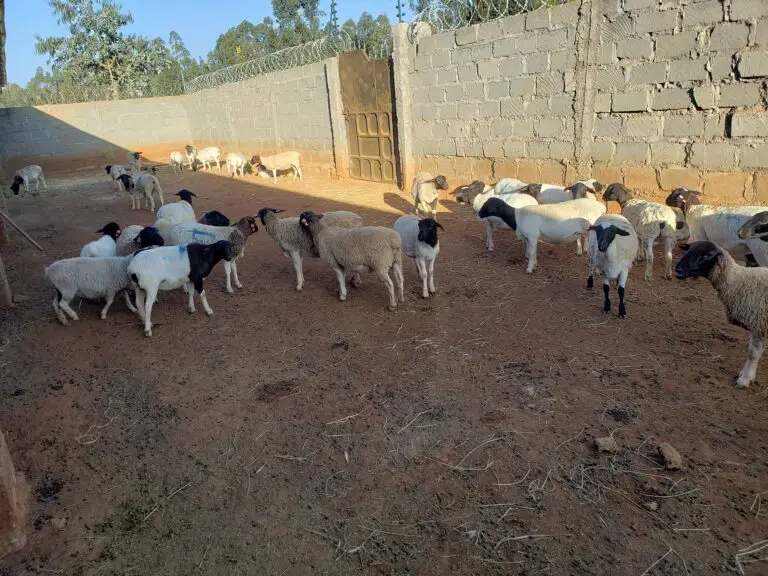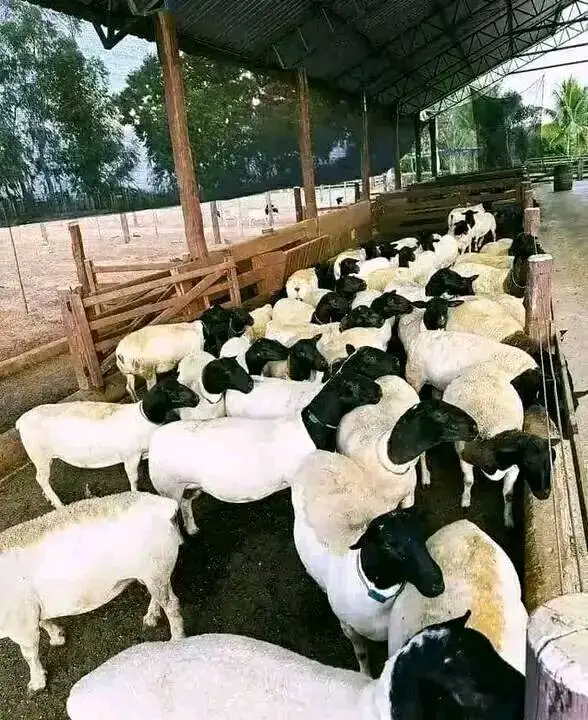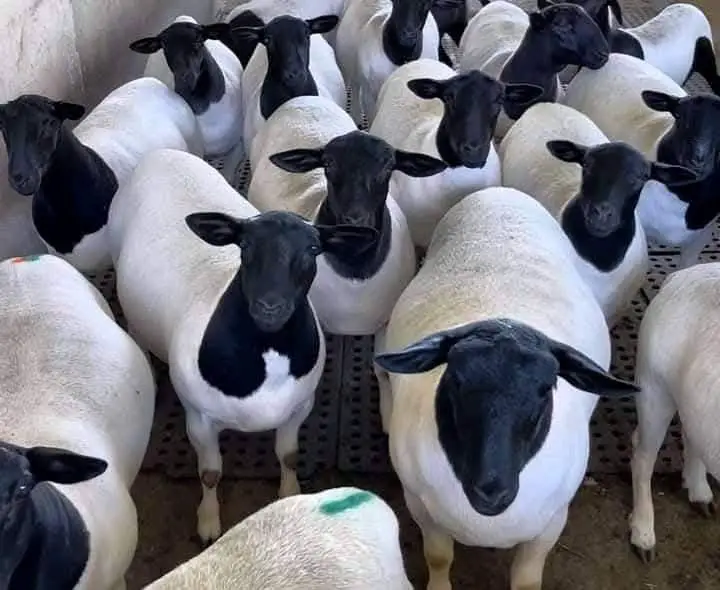Dorper Sheep Lambing
Dorper sheep are renowned for their high fertility, excellent mothering abilities, and fast-growing lambs. Unlike many other sheep breeds that have strict breeding seasons, Dorpers can breed year-round, allowing farmers to maximize production.
However, to ensure healthy lambs and a successful lambing process, farmers need to be well-prepared and knowledgeable about gestation, birth, and post-lambing care.
In this guide, we’ll cover everything you need to know about Dorper sheep lambing, from breeding and pregnancy to delivery and newborn care.
1. Breeding and Gestation Period
How Often Can Dorper Sheep Lamb?
Unlike some sheep breeds that only breed seasonally, Dorper sheep are non-seasonal breeders, meaning they can breed throughout the year. This allows for:
- 3 lambing cycles in 2 years (approximately every 8 months).
- High lambing percentages, often 150–200%, meaning twins are common.
Gestation Period
The pregnancy period for Dorper sheep is about 147 days (5 months).
- Estrus Cycle (Heat Period): Every 16–17 days, lasting 24–36 hours.
- First Breeding: Ewes can be bred as early as 7–8 months old if they have reached a good weight (~40 kg).
Tip: To increase conception rates, use the “flushing method”—feeding ewes a high-energy diet 3 weeks before breeding to boost ovulation.
2. Signs of Pregnancy in Dorper Sheep
Early Signs (First 2 Months):
- Reduced heat cycles
- Increased appetite and slight weight gain
- Ewes may become calmer
Mid-Pregnancy (2–4 Months):
- Noticeable belly enlargement
- Udder development begins
Late Pregnancy (Last Month):
- Significant weight gain
- Swollen udder with visible teats
- Reduced activity and isolation from the flock
Pregnancy Check: If unsure, consult a veterinarian for ultrasound scanning at 30–45 days of pregnancy.
3. Preparing for Lambing
As lambing approaches, it’s crucial to create a safe and comfortable environment for the ewe.
Signs of Imminent Lambing (Within 24–48 hours):
- Restlessness, frequent lying down and getting up
- Pawing at the ground to make a nest
- Swollen vulva with possible mucus discharge
- Full, firm udder with colostrum (first milk)
Setting Up the Lambing Area
- Lambing Pen (Kidding Pen): Should be clean, dry, and well-ventilated.
- Temperature: Keep lambing areas warm (ideal range 15–25°C).
- Bedding: Use dry straw or wood shavings.
Tip: If possible, separate ewes due to lamb soon into individual pens to prevent newborn lambs from being accidentally stepped on.
4. The Lambing Process (Stages of Birth)
Lambing happens in three stages, and most ewes give birth without assistance. However, knowing what’s normal can help detect problems early.
Stage 1: Early Labor (2–6 hours)
- The ewe becomes restless, isolates herself, and may stop eating.
- Contractions begin, and water breaks (clear or slightly yellowish fluid).
Stage 2: Active Labor (30 minutes to 2 hours)
- Strong contractions push the lamb out.
- Normal birth position: Lamb comes out head-first, with front legs extended.
- Once delivered, the ewe licks the lamb clean, stimulating breathing.
When to Assist?
- If a ewe has been in active labor for over 1 hour with no progress.
- If you see only one leg, a head without legs, or the lamb is stuck—intervention may be needed.
- Call a vet if unsure or inexperienced in assisted lambing.
Stage 3: Afterbirth (Within 1–3 hours)
- The placenta (afterbirth) is expelled.
- The ewe should clean and bond with the lamb.
Tip: If the placenta is not expelled within 6 hours, consult a vet—it may indicate retained placenta, which can lead to infection.
5. Newborn Lamb Care
Immediately after birth, proper care is critical for the lamb’s survival.
Key Steps for Healthy Lambs:
- Dry the Lamb: If the ewe does not lick the lamb dry, use a clean towel to prevent hypothermia.
- Ensure Colostrum Intake: The lamb must nurse within 30–60 minutes to get vital antibodies.
- Check Breathing: If the lamb is not breathing, rub its chest vigorously, clear mucus from the nose, or gently blow into its nostrils.
- Dip the Navel in Iodine: This prevents infections like navel ill.
Weak Lambs: If a lamb is too weak to suckle, milk colostrum from the ewe and feed with a syringe or bottle.
6. Common Lambing Problems and Solutions
Dystocia (Difficult Births):
- If the lamb is in the wrong position (e.g., backward, sideways), manual repositioning may be needed.
- If no progress after 30 minutes, seek veterinary help.
Rejection by the Mother:
- Occasionally, a ewe refuses to nurse her lamb.
- Solution: Hold the ewe still while the lamb nurses. If rejection persists, use bottle feeding or foster the lamb onto another ewe.
Hypothermia (Cold Lambs):
- Newborn lambs can become too cold, especially in cold, wet conditions.
- Solution: Warm the lamb using a heat lamp or dry blankets.
7. Post-Lambing Care and Weaning
- Feeding: Lambs nurse exclusively for the first 6 weeks.
- Growth Rate: Lambs should gain 250–350g per day.
- Castration & Tail Docking: Usually done at 7–14 days to prevent infections and improve hygiene.
- Vaccination: Lambs should get clostridial vaccines at 3–4 weeks old.
- Introducing Solid Food: Start offering creep feed at 2–3 weeks, and wean at 12–14 weeks.
Tip: Dorper lambs are fast growers, reaching market weight (35–40kg) in 4–6 months.
Conclusion: Maximizing Success in Dorper Sheep Lambing
Dorper sheep’s non-seasonal breeding, high fertility, and excellent maternal instincts make them a profitable choice for sheep farmers. However, successful lambing requires proper nutrition, a safe birthing environment, and quick intervention for complications.
Key Takeaways:
- Monitor pregnant ewes closely in the final weeks.
- Prepare a clean, dry lambing area before birth.
- Ensure lambs nurse colostrum within the first hour.
- Be ready to assist if birth complications arise.
- Provide warmth, vaccinations, and proper feeding for strong growth.
With proper management, Dorper sheep can produce multiple lambs annually, ensuring a profitable and sustainable flock for your farm.
